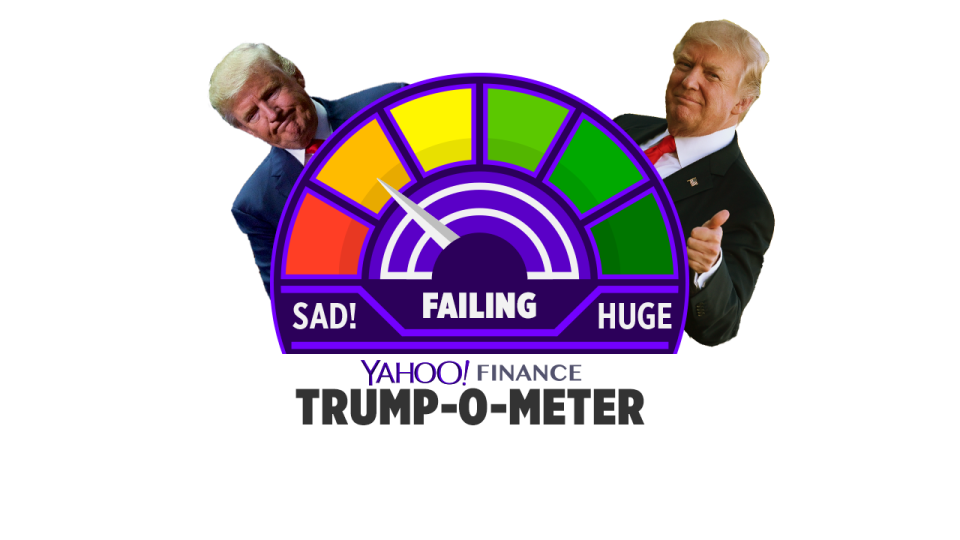This week in Trumponomics: the forever trade war
I’m sick of talking about tariffs and the Trump trade war. You’re tired of hearing about it. Malaise has hit financial markets, as trade worries depress stocks. And farmers are certainly sick of hearing how they need to bear short-term pain for somebody else’s gain.
But we have to keep talking about all this, because the trade standoff with China is now escalating in exactly the manner trade experts have warned could be dangerous and self-defeating.
Chinese and American negotiators have essentially stopped talking, after President Trump raised tariffs on Chinese imports earlier this month, and China did the same to American imports. Higher tariffs on imports now cost the average U.S. household an extra $831 per year, according to the New York Federal Reserve.
Trump has now gone a step further, threatening to cut the Chinese telecom giant Huawei and some other tech firms off from U.S. suppliers. China has hinted it may stop supplying U.S. firms with rare-earth metals that are crucial to some products, and scarcely available anywhere else. There’s posturing on both sides, but when neither side gives in, posturing becomes policy.
Trump is FAILING
If Trump has a shrewd endgame in mind, this turbulence might be worthwhile. But if this goes the way of Trump’s embarrassing North Korea negotiations—in other words, nowhere—it will impose net harm on the U.S. economy and possibly hasten a recession. Since the case for pessimism is growing, this week’s Trump-o-meter reads FAILING, our second-lowest reading.

Trump and President Xi Jinping of China will most likely meet in Japan at the end of June, with expectations growing for a breakthrough when they get together. But be skeptical. Trump and Xi met last November, and supposedly called for a trade war “truce” while their negotiators worked out the disagreement. The truce ended and sparks are flying again.
Trump’s trade war is becoming the biggest drag on the economy and on financial markets. Trump imposed his first tariffs on Jan. 22, 2018, on washing machines and solar panels. He followed those with tariffs on imported steel and aluminum, along with half of everything the United States buys from China. Stocks rose 31% from the day of Trump’s election in 2016 through Tariff Day, Jan. 22, 2018. In the 16 months since then, the S&P 500 has risen exactly 0%.
Trump knows his trade policy is hurting markets, and one can only imagine he looks forward to the day he can announce a deal with China, watch markets rally, and promptly take credit. But how does he get to that day? China has signaled they might just wait Trump out and let him explain the damage his trade policy is causing as he runs for reelection in 2020. Let the last man standing win.
Trump acknowledged that damage by engineering a $16 billion bailout package for American farmers who are losing sales to China because of retaliatory tariffs on U.S. agricultural imports. Farmers essentially say thanks, but could you just end all this and let us have our markets back?
The answer is, maybe not. Trump has threatened another set of 25% tariffs that would raise the price of hundreds of categories of consumers goods from China, including clothing, shoes, furniture, appliances, electronics, and smartphones. If he does it, a $100 kids bike at Walmart will probably shoot up to $125, a $1,000 iPhone would cost $1,250, and so on, and so on. After that, Trump may impose another 25% tariff on all imported cars and car parts, which would raise the cost of a Toyota Camry by $1,800 and the cost of other cars by more.
So we’ll probably keep talking about trade and tariffs. Sorry.
Confidential tip line: rickjnewman@yahoo.com. Encrypted communication available. Click here to get Rick’s stories by email.
Read more:
Where Obama beats Trump on the economy
What GM wants from Trump on trade
Why Medicare for all is doomed
Trump’s low threshold for stock-market pain
How Trump is blowing it with voters
Rick Newman is the author of four books, including “Rebounders: How Winners Pivot from Setback to Success.” Follow him on Twitter: @rickjnewman


